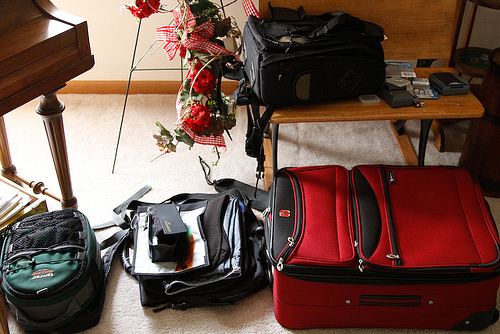Exploring local cuisine is thrilling but can be tricky with dietary restrictions. Many travelers face challenges finding suitable meals that meet their special dietary needs.
Understanding Dietary Restrictions and Allergies
Many people face challenges with their eating due to allergies or dietary restrictions. Foods that might cause problems include nuts, dairy, and gluten. It’s critical to know which foods are safe and which to avoid.
For those with severe allergies, even a small amount of the wrong food can lead to serious health issues.
Learning about different dietary needs helps in safely enjoying meals while away from home. This includes understanding religious rules or personal choices like vegan diets. Knowing what ingredients are in dishes makes it easier to pick the right foods when dining out or attending gatherings.
Always share your food sensitivities with others involved in preparing or serving your meals to prevent any issues.
Essential Tips to Navigate Local Cuisine with Dietary Restrictions
Getting around food restrictions while exploring local dishes isn’t easy. Knowing a few tricks can make your dining adventures safe and fun.
Research on local cuisine and ingredients
Looking up local dishes and what goes into them helps you plan meals. This means finding out which foods fit your special dietary needs before you even sit down to eat. Local food can have surprising ingredients that might not match your eating habits or health requirements.
For example, a dish that seems safe could have hidden allergens like nuts or dairy.
Learning about the area’s culinary preferences also shows you new foods that align with your restrictions. Many cultures offer plant-based options or use specific meats sparingly, making it easier for those avoiding certain animal products.
By understanding regional specialties, you can discover safe, delicious choices without worrying about unexpected reactions.
Learn necessary local language for your dietary needs
Master a few key phrases related to your dietary restrictions in the local language. This step is crucial for clear communication. For example, learn how to say “I am allergic to peanuts” or “I don’t eat dairy.” These phrases will help you ask about ingredients in dishes and inform restaurant staff about your needs confidently.
Carry a card that lists your dietary restrictions in both English and the local language. This approach ensures accuracy when communicating with those who may not speak English well.
It’s an effective way to avoid any misunderstanding about your food sensitivities or allergies during meals.
Be prepared with alternatives
Pack snacks and know where to find safe meals. This helps if local food can’t meet your needs. Look for grocery stores nearby that sell items fitting your dietary restrictions. Eating out with dietary restrictions gets easier when you bring your own snacks or check for shops selling suitable foods ahead of time.
Learn simple recipes using readily available ingredients. Cooking can save the day if restaurants around don’t cater to your diet. Discover cooking methods common in the region and adapt them using ingredients you can eat.
This skill lets you enjoy cultural cuisine while respecting your dietary limits, blending culinary exploration with health care.
How to Communicate Dietary Restrictions While Dining Out
Telling staff about your dietary needs is key. It makes eating out safer and more enjoyable. Here’s how to do it right:
- Call ahead – Check with the restaurant before you arrive. This gives them time to prepare.
- Be clear and specific – Describe your restrictions in detail. Use simple terms.
- Use allergy cards – These cards list your allergies in the local language, a big help if you’re traveling.
- Ask questions – Inquire about ingredients and preparation methods.
- Alert your server – As soon as you’re seated, let your server know about your needs.
- Choose wisely – Stick to dishes that are likely safe for you.
These steps help ensure a good dining experience, keeping your health front and center.
Exploring Regional Dishes While Managing Dietary Limitations
Eating local dishes sparks joy in traveling. Yet, for those with dietary restrictions, it seems tough. Good news: careful planning makes it possible. Start by researching menus and restaurants to find safe options that match your dietary needs.
Always tell restaurant staff about your allergies or food sensitivities directly and clearly.
Choose meals wisely. Opt for dishes with simple ingredients — they’re easier to check against your dietary list. Carry snacks just in case choices are limited at the destination.
This approach lets you enjoy regional cuisine without worry, ensuring a memorable dining experience while keeping health issues at bay.




